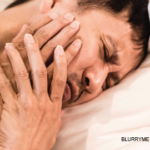For patients treated with alendronate, 1,010 adverse events were reported in the study period. Of these, 188 cases were osteonecrosis of the jaw, 91 of which had recent dental care and a mean time of bisphosphonate exposure of 70.9 months. In this group of patients, the risk factors for developing osteonecrosis of the jaw were being 65 years old, having diabetes, corticosteroid therapy and having a history of cancer.
In patients treated with risedronate, 711 adverse events were reported. Of these, 68 cases were osteonecrosis of the jaw, with 28 patients having had recent dental care and a mean time of bisphosphonate exposure of 53.6 months. In these patients, risk factors for developing osteonecrosis of the jaw were being at least 65 years old, smoking, corticosteroid therapy and having a history of cancer and chemotherapy.
The reporting odds ratio calculation showed that corticosteroid therapy was more frequently associated with patients treated with risedronate (2.10 [1.64–2.69]) and alendronate (1.33 [1.04–1.70]) than zoledronic acid in patients with rheumatologic conditions, with no other significant differences. Additionally, the incidence of osteonecrosis of the jaw was significantly higher in patients with rheumatic conditions treated with zoledronic acid than those treated with either alendronate or risedronate (P<0.001, for both).
Between 2011 and 2020, 614,932 patients were treated with zoledronic acid for rheumatic conditions, with 59 cases of osteonecrosis of the jaw, yielding an incidence of 9.6/100,000 person-years. During this period, 2,233,536 patients were treated with risedronate, with 44 cases of osteonecrosis of the jaw, yielding an incidence of 2.0/100,000 person-years, and 2,432,373 patients were treated with alendronate, with 125 cases of osteonecrosis of the jaw, yielding an incidence of 5.1/100,000 person-years.
Conclusion
The data from this study confirm that in a large population of patients with osteoporosis, bisphosphonate-associated osteonecrosis of the jaw rarely occurs and can occur more often in patients treated with injectable zoledronic acid than in those treated with the oral bisphosphonates alendronate and risedronate.
Additionally, the risk of bisphosphonate-related osteonecrosis of the jaw appears related to the bone resorption inhibition potency of the particular bisphosphonate, with risedronate having the lowest bone resorption potency and zoledronic acid in rheumatic conditions having the highest bone resorption potency. Being an active smoker seems to be a consistent risk factor for developing osteonecrosis of the jaw, as does having had recent dental care.
The pharmacovigilance study limitations include that this study was retrospective in nature, the under-reporting of adverse events often occurs and researchers only examined claims from one database.


